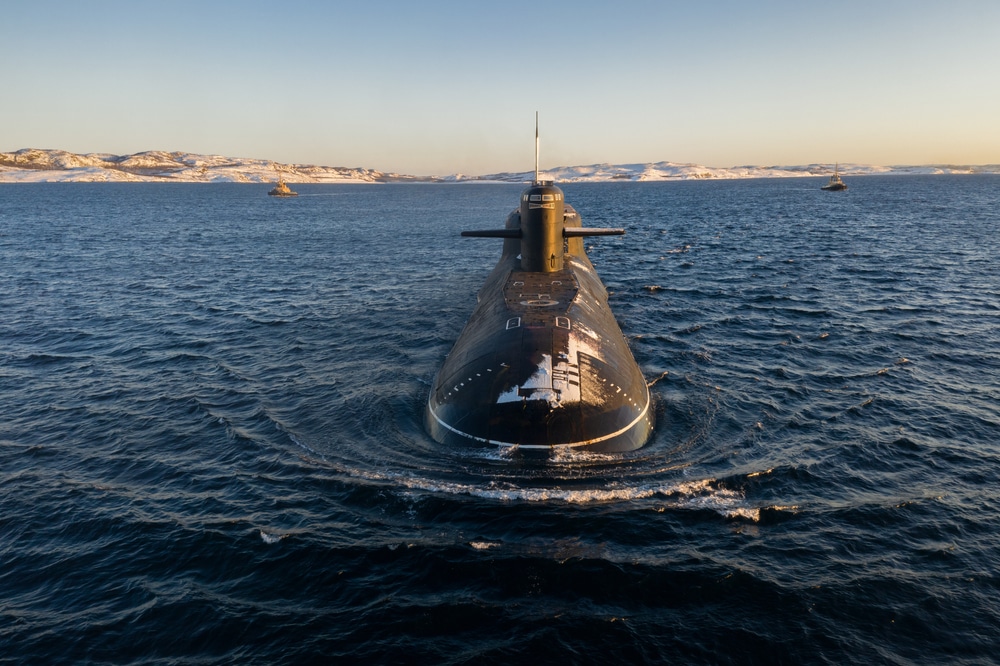Two Russian navy submarines, one armed with nuclear missiles, completed a voyage under the ice of the Arctic for a transfer from the Barents Sea to the Pacific Ocean.
The Russian Defense Ministry on Monday announced the transfer of two nuclear-powered submarines as part of Ocean-2024, a week-long strategic exercise that took place in the Pacific Ocean and Arctic Ocean. The large-scale military drill concluded the same day.
The transfer also came as Moscow and Washington heated up their rivalry in the Northern Hemisphere this month. They have deployed nuclear-capable bombers to Northern Europe and Northeastern Asia and conducted power projections around the freezing Arctic region.
The voyage was more than 4,000 nautical miles, where submarines Imperator Aleksandr III and Krasnoyarsk arrived at their new home on the Kamchatka Peninsula in the Far East from the Barents Sea in the northwest, shifting from the Northern Fleet to the Pacific Fleet.
During the transfer, both submarines used a route that passed through the waters of six Arctic seas in difficult ice conditions, the Russian Defense Ministry said.
The unnamed Arctic seas are believed to have included, from west to east, the Barents Sea, Kara Sea, Laptev Sea, East Siberian Sea and Chukchi Sea. They are all the marginal seas of the Arctic Ocean, situated along the lengthy northern coast of Russia.
The Chukchi Sea is the one that bounds the United States. It is in the north of the Bering Strait, a waterway separating Russia’s Chukchi Peninsula to the west and Alaska to the east, connecting the Pacific Ocean to the south and the Arctic Ocean to the north.
The ministry did not specify the voyage’s points of departure and arrival. The Northern Fleet has a ballistic missile submarine base in Gadzhiyevo, and Zapadnaya Litsa base for cruise missile submarines like the Krasnoyarsk. Both are within the northwestern region of Murmansk.
The Rybachiy submarine base near Petropavlovsk on the Kamchatka Peninsula is the home of all nuclear-powered submarines assigned to the Pacific Fleet. The peninsula lies between the Bering Sea to the east and the Sea of Okhotsk to the west.
The Imperator Aleksandr III is a 24,000-ton Borei-class ballistic missile submarine, armed with up to 16 submarine-launched ballistic missiles, and each missile carries six nuclear warheads at most. This type of weapon is one of the three parts of Russia’s nuclear triad.










